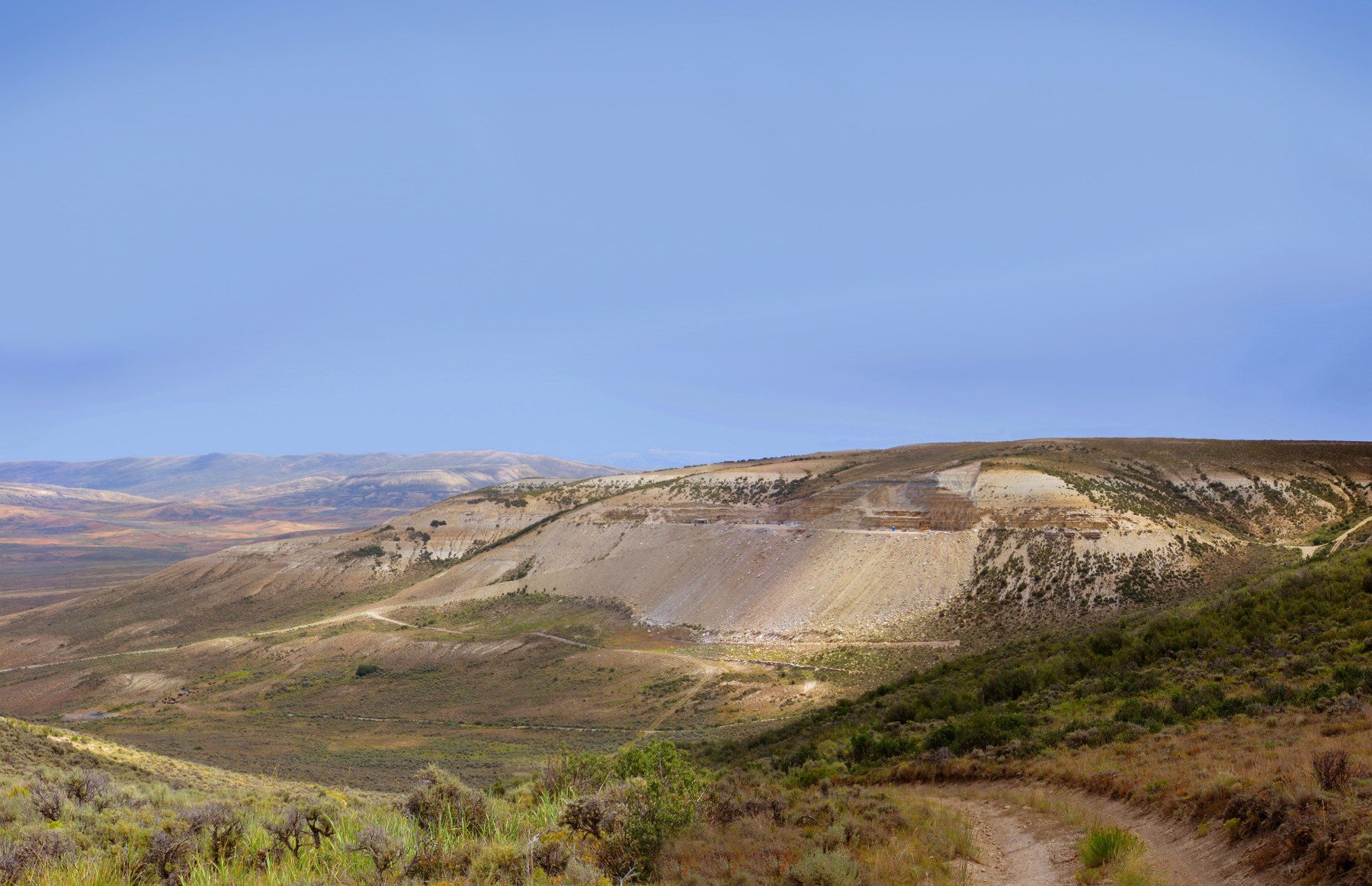
--
Fifty million years ago the Green River Fossil quarry site was a tropical freshwater lake teeming with fish, plants, and other animals.
--
Over many millennia, the lakebed petrified into layer upon layer of fossil rich stone.
Each summer a crew from Green River Fossil Company travels to the quarry in the high desert of southwestern Wyoming to collect its prehistoric treasures. To reach the fossil-rich stone they must first remove many tons of loose rock and shale with heavy equipment. As the crew gets closer to the fossil bearing layers, the stone is harvested with only hammers, chisels, and strong muscles.
Screen-Quote
Thanks to our 2022 Quarry Crew!
InquireLooking north from the Green River Fossil Company quarry towards Fossil Butte National Monument. Fossil Butte is managed by the National Park Service.
Photo by Thomas Wiewandt
InquireEach season the Green River Fossil Company sends a crew of fossil diggers to our private quarry to extract fossils. Our quarry is located in what was once a prehistoric lake.
Photo by: Thomas Wiewandt
Using hammers and flat steel chisels our crew peels the sedimentary stone layer by layer in search of 50 million-year-old fossils.
Flat steel chisels are used to split layers of stone.
When the light is right, one can see a fossil just below the surface of the stone. When we find them, we mark them in pencil. Our skilled fossil diggers can determine a great deal about the fossil including the size, species, and a little about its preservation quality even before it is removed from the ground. In this case, we have a high-quality Diplomystus dentatus.
Photo By: Thomas Wiewandt
InquirePictured is a small fossil fish that is covered in a thin layer of limestone. The fossil is a high-quality Cockerellites liops.
Photo By: Thomas Wiewandt
InquireWhen a grouping of fossil fish is found in a given location, wood templates are placed over the stone to determine compositions and cut sizes.
Photo By: Thomas Wiewandt
Sections of fossil stone are cut using a hand saw.
Once the fossil stone is marked and cut, our crew will use long steel chisels to separate the stone from the layers below.
Once separated from the stone below, our crew will carefully lift the slabs of fossil stone upright.
Photo By: Thomas Wiewandt
InquireCut slabs of fossil stone are transported to A-frames using gravity clamps and our front loader.
Cut slabs of fossil stone are loaded onto A-frames. The A-frames are later transported to our prep labs in Logan Utah.
In the Green River Stone quarry, cut tiles containing fossils are sorted by species and by size. These will later be transported to our prep lab in Logan UT.
Night inspection of fossil stone is common in our quarry. Lanterns provide ideal low lighting angles. Once found, the fossils are marked in pencil. The following day our crew will return to template the stone, cut the stone, and remove the fossils.
Photo By: Alex Stricker
The discovery of a rare 50 million-year-old palm fossil. On first inspection, it appears well preserved.
Our Quarry Manager Matt Helm.
The 2015 quarry crew standing in front of "Betty" our D8 Bull Dozer.
Looking north from the Green River Fossil Company quarry towards Fossil Butte National Monument. Fossil Butte is managed by the National Park Service.
Photo by Thomas Wiewandt
Each season the Green River Fossil Company sends a crew of fossil diggers to our private quarry to extract fossils. Our quarry is located in what was once a prehistoric lake.
Photo by: Thomas Wiewandt
Using hammers and flat steel chisels our crew peels the sedimentary stone layer by layer in search of 50 million-year-old fossils.
Flat steel chisels are used to split layers of stone.
When the light is right, one can see a fossil just below the surface of the stone. When we find them, we mark them in pencil. Our skilled fossil diggers can determine a great deal about the fossil including the size, species, and a little about its preservation quality even before it is removed from the ground. In this case, we have a high-quality Diplomystus dentatus.
Photo By: Thomas Wiewandt
Pictured is a small fossil fish that is covered in a thin layer of limestone. The fossil is a high-quality Cockerellites liops.
Photo By: Thomas Wiewandt
When a grouping of fossil fish is found in a given location, wood templates are placed over the stone to determine compositions and cut sizes.
Photo By: Thomas Wiewandt
Sections of fossil stone are cut using a hand saw.
Once the fossil stone is marked and cut, our crew will use long steel chisels to separate the stone from the layers below.
Once separated from the stone below, our crew will carefully lift the slabs of fossil stone upright.
Photo By: Thomas Wiewandt
Cut slabs of fossil stone are transported to A-frames using gravity clamps and our front loader.
Cut slabs of fossil stone are loaded onto A-frames. The A-frames are later transported to our prep labs in Logan Utah.
In the Green River Stone quarry, cut tiles containing fossils are sorted by species and by size. These will later be transported to our prep lab in Logan UT.
Night inspection of fossil stone is common in our quarry. Lanterns provide ideal low lighting angles. Once found, the fossils are marked in pencil. The following day our crew will return to template the stone, cut the stone, and remove the fossils.
Photo By: Alex Stricker
The discovery of a rare 50 million-year-old palm fossil. On first inspection, it appears well preserved.
Our Quarry Manager Matt Helm.
The 2015 quarry crew standing in front of "Betty" our D8 Bull Dozer.
